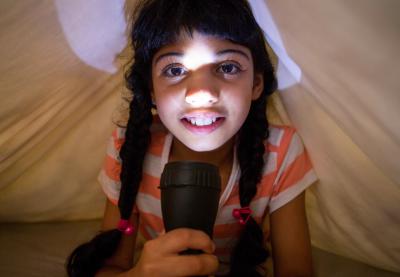As a teacher, being responsive to each child’s needs, strengths and interests requires knowing each child and the developmentally appropriate strategies for each child.
Scaffolding instruction is a tool that can help provide a natural way to model expectations and allow the student to practice meeting these expectations before turning over more responsibility to the student. Teachers can document lessons with photos.
The goal of scaffolding instruction is to explore concepts in the classroom by starting with the strengths of each learner. In most classrooms, you’ll find a wide range of both social and academic skills. You will be able to tailor lessons to each child, build on their skills and help boost their confidence with scaffolding.
For example, if a child feels shy and afraid to speak, you can crouch down to make eye contact and model a simple greeting while acknowledging their feelings.
As you build a rapport, you can say, “Today, I want to hear your voice when you greet me at morning meeting.” This provides a way to challenge the child and give him more control and input into the process.
Scaffolding can be used in an early childhood setting. Begin by exploring subject matter through projects and hands-on learning. A teacher can guide a child by asking questions, nudging children to explore concepts and building upon prior knowledge. This analysis and synthesis embeds knowledge beyond simple memorization or recall.
Teachers should realize that each child brings his own set of experiences and ideas to a lesson, regardless of the lesson’s subject matter. And teachers can assess what learners know through dialogue, an understanding of the child’s family and observations with children.
The next stage in scaffolding is to ask students what they know. This can be done on an individual basis, in small groups or with the whole group.
Let’s say the subject of a lesson is light. By using flashlights, light bulbs of various colors or a light table with several objects to explore, a teacher can ignite a child’s innate curiosity. Mining for what they know and what theories they are testing out as they explore these objects becomes easier.
Once you have a sense of what children know and what they want to know, it’s time to begin nudging them. For children actively engaged with flashlight parts at the light table, a teacher silently observing students may be able to document in writing or with an audio recording what is said.
A teacher can use open-ended questions that help children connect ideas and use materials. For children who need practice sharing and engaging with peers, this is a good time to model this behavior. Scaffolding for these important social skills can be as simple as modeling language such as, “Lisa, tell Mary that you’d like a turn with the magnifier when she is finished.”
The first few times, Lisa may need you to provide this type of modeling language, “Lisa, I see that when you asked Mary for the magnifier, she gave it to you as soon as she was done.” As Lisa exhibits more of the desired behavior, be sure to let Lisa know you notice her effort.
Over time, children begin to learn the give and take requisite to play. Next you can focus on how to use materials in more creative ways or how to problem-solve when exploring materials or issues.
While children explore materials and test their theories about light and objects, it’s important that teachers are documenting what is said and heard. These notes can be shared with children through follow-up conversations or posted on the wall with photographs that document their progress.
By viewing themselves from the outside, children are often better able to make connections about learning or reflect back on where they have come from. “Oh, yeah! I used to think the light came from a switch inside! Now I know the metal thing touches the metal on the bottom of the teeny tiny light bulb!”
Careful scaffolding enables this kind of connected, engaging learning to unfold for each learner.
